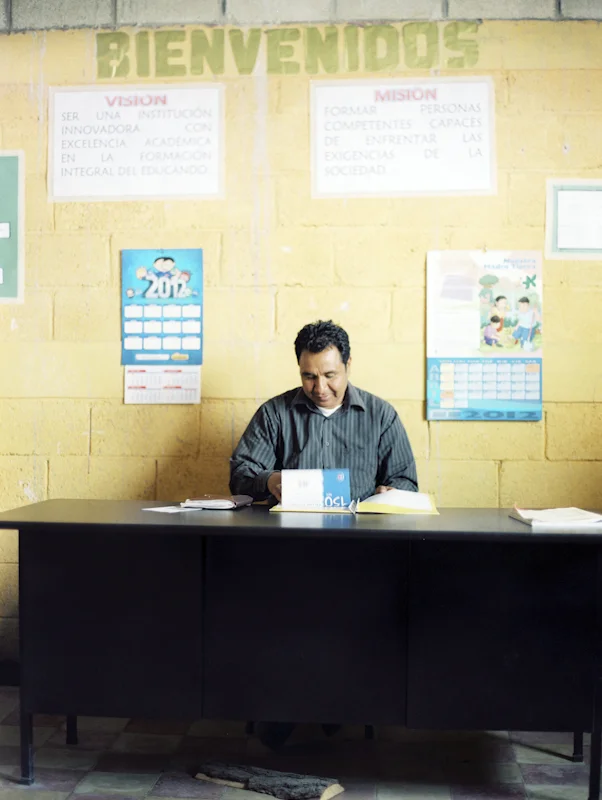Last May, I spent eight of my most favorite days in central Guatemala. Days filled with experiences & friends & places & emotions that I surely will never forget. Five close friends, my then-girlfriend (now fiance), & I made the venture to start new projects & finish old ones. This was my third trip; it was others’ first, and yet others’ twelfth.
In years past, our focus had been construction & manual labor, which always seemed a tiny bit awkward to me since neither are my particular forte here at home. Nevertheless, we had always gone with great plans and left with big accomplishments. But this time, our focus would be slightly different. Clean water.
Clean water. In other words, something that’s been on my radar for the better part of four years now thanks to a project-turned-organization a dear friend of mine put together called River to Well. Something that truly is meaningful to me & something for which I have no trouble going full-steam-ahead.
In Guatemala, there are a couple problems that are noteworthy here. One: the vast majority of folks don't understand that there’s actually a problem with the water they’re drinking. Water isn’t scarce there; but the water sources… they’re heavily — and unknowingly — polluted by those who then rely on them for useable water. Two: of the folks who understand the problem, very few have the means necessary to fix it. Boiling water takes time and resources, and wells are expensive and rather inconceivable. And, just imagine having to radically change your lifestyle to compensate for something that you might not even consider to be a problem. See, folks there can tolerate the unhealthy water to a point, at least in the short term; they may get sick as a result here and there, but such is life, and thus, a change in the way of doing things simply isn’t warranted in their eyes. So, at the end of the day, the issue of clean water has just as much to do with education as it does with efforts to actually make the water cleaner & healthier.
So here we are. Our job? It was to install fifty-some portable water filters in three rural schools. But just as important, to teach the students and faculty why we were there in the first place, and then instill in them the importance of using & caring for their new filters correctly. We prefaced all of this by visiting the factory responsible for constructing the filters — called Ecofiltro — and talking with several of the folks behind its operations. The actual filters were small — about the size of a medium flower pot — and made out of clay & wood chips. They fit perfectly inside a variety of housings, from five gallon buckets to nicer ceramic containers. We chose the more economical of the different containers — the five gallon buckets — and planned to give them new homes in the aforementioned schools in the coming days.
I should mention that the organization which helped us plan our mission — Salud y Paz — had reached an agreement with these three schools to ensure the filters are properly cleaned and replaced for the foreseeable future. I should also mention that this project was the first of its kind; not only was our team straying away from its tried-and-true construction roots, but Salud y Paz was also treading unfamiliar waters in coordinating such a deal.
We spent the following days assembling filters, preaching about dirty & clean water, playing soccer, sitting with new friends, giving instructions, seeing hillsides and villages, listening to stories, snapping photos, and doing our best to love folks. We were welcomed with open arms. We were given wonderful lunches and all-school assemblies, complete with native dances & music. And we were awed in knowing that this was exactly where we needed to be, and exactly what we needed to be doing.
Aside from all this, we also spent a morning with Nehemiah, who we met in 2011. If you follow this blog, my Twitter feed, or my Facebook, you’re well aware of this guy. (And if not? Nehemiah is six. He was born with cerebral palsy and was unable to walk. Since meeting him, we’ve supported his family financially, he’s been allowed into a private school, and we’ve grown awfully fond of him.) There are a couple photos below of him and his parents, but the short of it is that he’s better; he’s walking more, he looks happier & healthier, and he’s the brand new owner of a slick yellow three-wheeler.
This trip meant more to me personally than any other trip I’ve taken. It was much more of a seed-planting trip than any other. We opened a lot of doors. There wasn’t a big sense of completion. And I like that. For certain, a decent-sized part of my heart is in Guatemala, and I’m so excited to see how that continues to build. I’m excited to hear stories about our water filters. I’m excited to visit our three schools again. I’m excited to see Nehemiah once more as soon as possible. And the list goes on…
It seems a bit backward for a blog that otherwise focuses primarily on photographs to have so many words, especially crammed into the top of one post. But, when it all shakes out, there’s a reason I take photos. I love the idea of my camera serving as a catalyst to hopefully build relationships and be of some kind of help to folks here and there. I’m grateful to have a job that not only allows me to spend time in Guatemala each year, but also pushes me to tell stories. Stories not only about weddings & people, but about every-day life in another country, where seemingly huge and overbearing problems might not be so huge and overbearing afterall, if we just make plans and go do things to make them better.
































































































